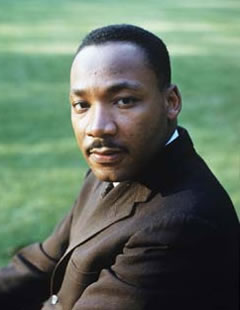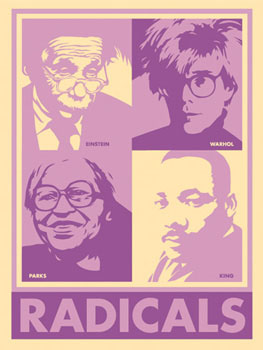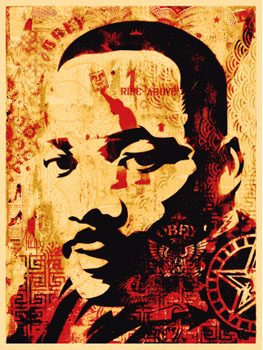Howard Sochurek (Difference between revisions)
From The Giant: The Definitive Obey Giant Site
m |
m |
||
| Line 22: | Line 22: | ||
'''Sochurek's MLK Portrait:''' [[Image:mlk original photo.jpg]] | '''Sochurek's MLK Portrait:''' [[Image:mlk original photo.jpg]] | ||
| − | '''Fairey's Radicals.:''' [[Image:radicals.jpg]] | + | '''Fairey's Radicals.:''' [[Image:radicals.jpg]] '''Fairey's MLK Jr.:''' [[Image:mlk.jpg]] |
| − | + | ||
| − | '''Fairey's MLK Jr.:''' [[Image:mlk.jpg]] | + | |
Revision as of 04:27, 17 July 2006
From his New York Times obituary published April 29, 1994:
Howard Sochurek, a photographer for Life magazine on assignment throughout the world and later a pioneer in computer-assisted imaging, died on Monday(April 25, 1994) in Jackson Memorial Hospital in Miami. Mr. Sochurek, who lived in Boynton Beach, Fla., was 69.
The cause was liver cancer, said his wife, Tania.
Mr. Sochurek joined Life in 1950 and worked in the Soviet Union, the Middle East, Mongolia and Vietnam. He also served in the magazine's bureaus in New York, Chicago, Detroit, New Delhi, Singapore and Paris.
He was with Life for two decades. In Korea, he parachuted behind enemy lines to photograph American troops in combat. In Vietnam, he covered the fall of the French garrison at Dien Bien Phu.
He became a freelance photographer in 1970 and was one of the first to use a computer to color and manipulate photographs and other images. His computer-enhanced images of X-rays and CAT-scans led him to extensive photographic work in the medical field. Physicians and drug and other medical companies used his photographs in textbooks and advertisements.
Mr. Sochurek graduated from Princeton University in 1942 and in 1960 was awarded a Neiman fellowship to study at Harvard University. He was an Army veteran of World War II.
He is survived by his wife and a daughter, Tania DeChiara of New York.
In 1960, LIFE magazine published a famous portrait of Martin Luther King Jr. taken by Howard Sochurek in Atlanta at the Southern Christian Leadership Conference convention. This photograph served as the model for 1/4 of Shepard's 2003 work Radicals and Shepard's 2005 work MLK Jr.


